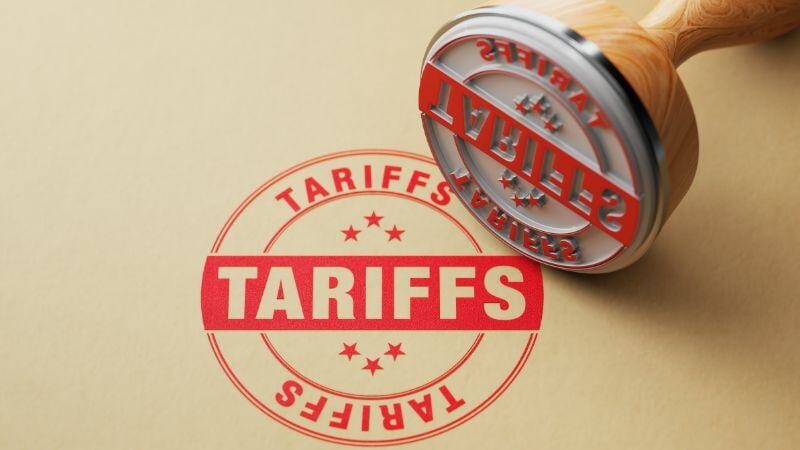USTR Finalizes Section 301 Tariff Hikes on Chinese Imports
USTR Finalizes Section 301 Tariff Hikes on Chinese Imports
On September 13, 2024, United States Trade Representative (USTR) Katherine Tai announced the final modifications relating to the statutory review of the tariffs in the Section 301 China investigations, as well as several other actions, including determination of the final Section 301 duty rates covering imports of Chinese-originating goods. A host of products—such as EVs, EV batteries and battery parts, solar panel modules, steel and aluminum products, and certain critical minerals and medical items—will be subject to tariff rate hikes ranging between 25% and 100% starting on September 27, 2024.
The USTR announcement generally adopts the results of the Biden Administration’s “sunset review” of the China tariffs first imposed in 2018, which were published in May 2024 (for prior coverage, see the tax alert dated May 15, 2024). The May notice included proposed steep tariff increases to many categories of merchandise and invited comments on several related issues.
According to the new notice, USTR will:
- Increase tariffs on certain products (see table below);
- Create a process for companies importing certain machinery used in domestic manufacturing to apply for a temporary exclusion from the Section 301 tariffs;
- Provide temporary exclusions for certain solar manufacturing equipment; and
- Accept comments on whether to increase tariffs on certain tungsten products, wafers, and polysilicon originating in China.
Tariff Rate Increases
The final increased tariffs will be imposed for specific manufactured goods deemed “strategic” to U.S. interests over the following time periods:
Merchandise Category |
Original Proposal / Date |
Final Duty Rate / Date |
|
Battery parts (non-lithium-ion batteries) |
Increase rate to 25% in 2024 |
Same |
|
Electric vehicles |
Increase rate to 100% in 2024 |
Same |
|
Facemasks |
Increase rate to 25% in 2024 |
25% in 2024; 50% in 2026 |
|
Lithium-ion EV batteries |
Increase rate to 25% in 2024 |
Same |
|
Lithium-ion non-EV batteries |
Increase rate to 25% in 2026 |
Same |
|
Medical gloves |
Increase rate to 25% in 2026 |
25% in 2025; 50% in 2026 |
|
Natural graphite |
Increase rate to 25% in 2026 |
Same |
|
Other critical minerals |
Increase rate to 25% in 2024 |
Same |
|
Permanent magnets |
Increase rate to 25% in 2026 |
Same |
|
Semiconductors |
Increase rate to 50% in 2025 |
Same |
|
Ship-to-shore cranes |
Increase rate to 25% in 2024 |
Same |
|
Solar cells |
Increase rate to 50% in 2024 |
Same |
|
Steel and aluminum products |
Increase rate to 25% in 2024 |
Same |
|
Syringes and needles |
Increase rate to 50% in 2024 |
100% in 2024 |
The duties shown above for 2024 will take effect on September 27 and for 2025 and 2026, the effective date is January 1. (Certain exclusions for ship-to-shore cranes are set forth in the notice for contracts executed before May 14, 2024 and that enter the U.S. before May 14, 2026. The certification required for the importer to claim an exemption is set forth in Annex D to the notice.)
The applicability of these Section 301 duties (in addition to the Normal Trade Relations duties, if any) is based on the tariff classification code under the Harmonized Tariff Schedule of the United States (HTSUS). A complete list of the 389 covered HTSUS codes is appended to USTR’s announcement as Annex A.
Other Actions
The second USTR action centers on machinery used in domestic manufacturing classified in HTSUS Chapters 84 and 85. USTR originally proposed 19 product categories covering 312 HTSUS subheadings for temporary exclusion, but the notice adds five additional subheadings. All of the subheadings are limited to machines used to physically alter a good in the manufacturing process.
Subheadings covering parts, accessories, consumables, or general equipment that is unable to physically change a good are not included. The list of exclusions by HTSUS code is set forth in Annex E of the notice.
The third action concerns exclusions for the solar manufacturing machinery. USTR originally proposed 19 categories of equipment for exclusions from the Section 301 tariffs. The September 13 notice eliminates five categories of exclusions covering solar manufacturing equipment for modules. Annex C contains the HTSUS modifications to impose additional duties to increase rates of additional duties and to exclude certain solar manufacturing equipment from additional duties.
The final action taken by USTR centers on tungsten products, wafers, and polysilicon—all raw materials used in semiconductor manufacturing. A public comment process will be announced via a separate notice in the near future.
Contact Us

